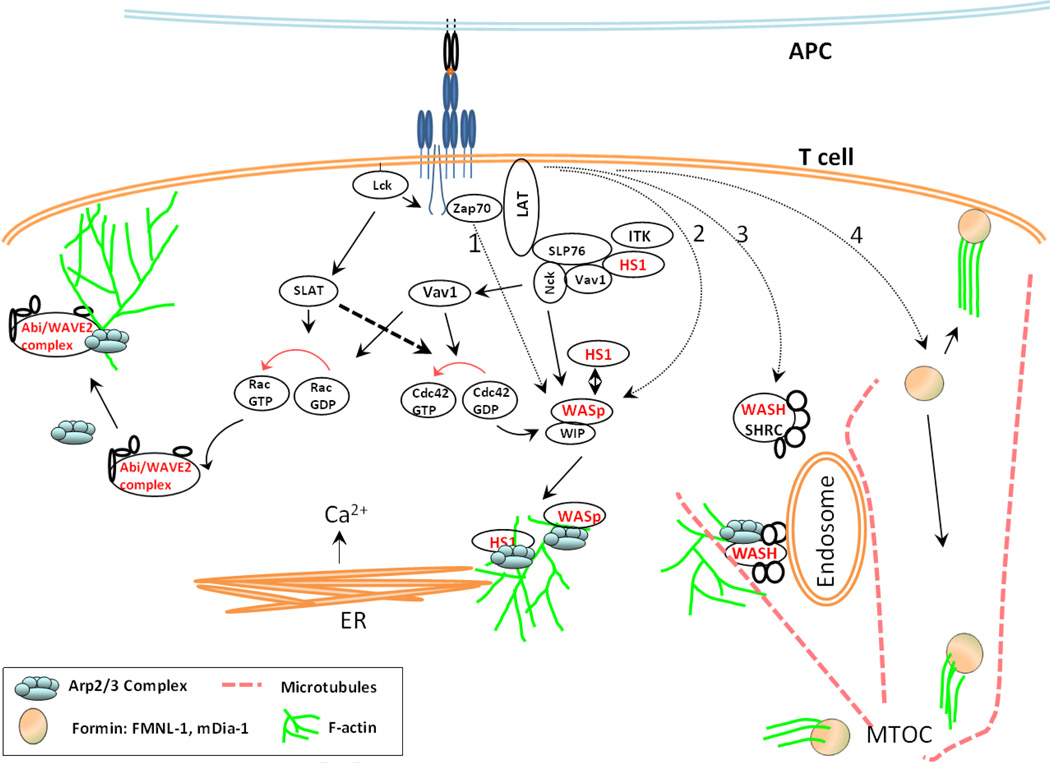Figure 2.
Schematic view of integration of TCR signal transduction with diverse components of the actin polymerization machinery. TCR ligation with the pMHC complex on APC leads to Lck-mediated phosphorylation of cytosolic ITAM motifs in the CD3 zeta chain, which then serve as docking sites for ZAP70 kinase and it is accompanied by ZAP70 phosphorylation. From this initial step, TCR signaling diversifies to trigger a variety of signaling modules that yield actin polymerization. ZAP70 can activate NPF WASp via WIP-CrkL pathway (1), or via recruitment of Nck and thus of WASp. ZAP70-mediated recruitment of LAT and SLP76 complex, which then recruits Vav1, can activate Rho GTPase Cdc42, which in turn can release WASp auto-inhibition. Alternatively, WASp can be activated by PIP2-dependent-, Fyn-dependent or PST-PIP pathway (2). Activated WASp then recruits Arp2/3 complex and initiates actin polymerization. HS1, another NPF with cortactin activity, is recruited in an ITK-dependent manner and interacts with WASp, or can independently bind Arp2/3 and stabilize F-actin. WASP and HS1 activation in response to TCR engagement promotes release of Ca2+ from intracellular stores. In addition to Vav1, Lck-dependent activation of another GEF - SLAT - causes Rac GTPase activation, which in turn causes Abi/WAVE complex-dependent Arp2/3 recruitment to generate lamellipodial spreading and Ca2+ entry from the extracellular milieu. SLAT also activates Cdc42. Activation of WASH (3), a WASp-family NPF, causes the binding of WASH regulatory complex (SHRC) with endosomes, Arp2/3 complex recruitment and subsequent actin polymerization at the endosomes. SHRC also interacts with microtubules, and regulates endocytic recycling of cell surface receptors. Apart from the actin nucleating factor Arp2/3, the formin family proteins respond to TCR activation, and act to elongate the actin filaments linearly. These proteins localize to filopodia, as well as the perinuclear centrosomal area, where they regulate MTOC polarization to the synapse. (NPFs in the signaling cascades shown in red).

